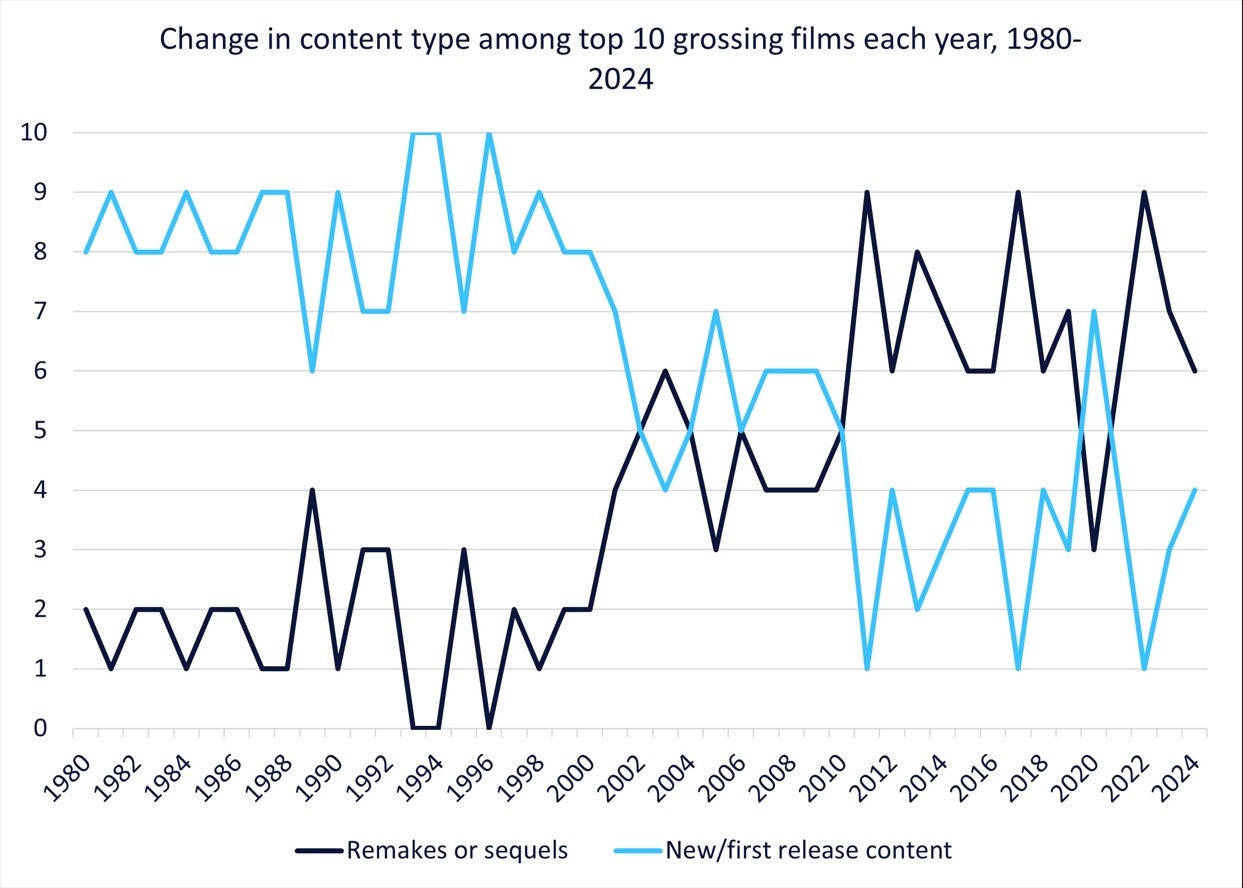During the 1980s, on average two of the top ten highest-grossing films were remakes or sequels.
However, between 2010 and 2024, that number rose to seven in ten, a 250% increase in remakes and sequels. Declining creativity, or a reduced desire for novelty, which is it?
Fear of straying from the known underlines the fragility of the film industry, particularly in the wake of traditional media’s managed decline, and the growth of the creator economy. Media is increasingly being consumed on smaller and smaller screens, in briefer formats, and by smaller creators.
The saga surrounding the acquisition of Paramount is yet another parable that demonstrates the vulnerability of ailing traditional media businesses, that once rode the waves of blockbuster success. Paramount’s core business struggles have been compounded by a spat between its shareholders. This is notably due to its dual-class share structure, which allows non-executive chairwoman Shari Redstone control of the company with only a minority stake. She has demanded a significant premium for her shares, to the board and common shareholders’ dismay.
But what is wrong with a remake?
Nothing is wrong with remakes; in some cases, they can be very welcome additions. I thoroughly enjoyed Dune and the eighth installment of the Mission Impossible franchise, among many others. Nonetheless, the success and volume of these kind of films is symptomatic of a wider trend. One theory is that as societies’ anxiety has increased, so has our desire to cling to the known. Please Tom Cruise, save me from another sequel, I know you can do it.
Almost all stories follow similar formulas; the hero’s journey, or monomyth as it is known. Shakespeare borrowed plotlines from preexisting tales. However, the rampant recycling of modern media is different. Narrative structures like boy meets girl, boy loses girl, etc. have been reused endlessly, though repeated incarnations were rarely as shameless as merely updating films for contemporary audiences.
Do these sequels and remakes really indicate a wider social trend?
It seems they do, yes. Neuroimaging has demonstrated that smartphone addiction has been linked to negative impacts on creative cognition. According to Pew Research smartphone ownership is at around 90% of US adults, with smartphone addiction reported at 50% for teens and 27% for parents.
This data may explain the pervasiveness of creativity angst. In such an environment, it is no surprise that Apple triggered backlash with its latest iPad advert, which showed a hydraulic press crushing creative instruments. Or that AI boomers and doomers constantly focus their prophecies on the creative act, both claim that AI will outstrip human creativity. Deepfakes and AI-generated content will further undermine the creative act, stealing from and victimising those who dare to create.
In such an environment, it seems less surprising that blockbusters have morphed into their current state, the graph below demonstrates the reversal of new content’s dominance among the ten highest-grossing films each year. The creative act is in peril, sequels are just a symptom. To heal creativity, we may just have to try a little harder.

Note: These films have been classified based on whether they are the first time that story has been told in film. Source: IMDBPro.








